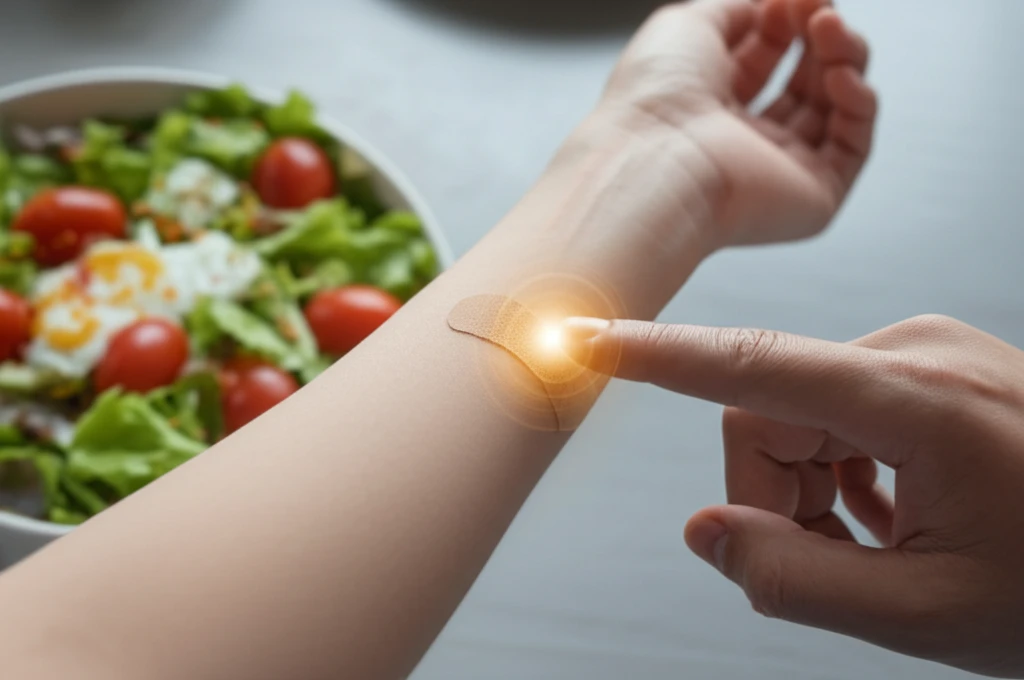
Painless Glucose Monitoring: A New Era for Diabetes Management?
"Discover how minimally invasive technology is revolutionizing postprandial glucose monitoring and empowering individuals to take control of their health."
For individuals living with diabetes, maintaining optimal blood sugar levels is a daily challenge fraught with potential complications. Cardiovascular diseases, blindness, and kidney failure are just some of the risks associated with insufficient glucose control. Recent studies, such as the DECODE study, highlight the importance of managing postprandial glucose excursions – the spikes in blood sugar that occur after meals – as a critical factor in preventing cardiovascular issues.
Traditional methods of glucose monitoring, such as self-monitoring of blood glucose (SMBG), often involve frequent finger pricks, causing discomfort and inconvenience. While continuous glucose monitoring (CGM) systems offer more comprehensive data, they can be burdensome due to the need for calibration and subcutaneous needle insertion. This creates a need for innovative, less invasive approaches to glucose monitoring.
Enter minimally invasive interstitial fluid extraction technology (MIET), a promising new method that aims to measure glucose levels without the need for blood samples. This article explores the potential of MIET to accurately monitor postprandial glucose excursions, offering a pain-free and convenient alternative for individuals with diabetes and those seeking to optimize their health.
How Does Minimally Invasive Glucose Monitoring Work?

MIET leverages the power of microneedle arrays to gently access interstitial fluid (ISF), the fluid surrounding cells beneath the skin. The process involves:
- Microneedle Application: A plastic microneedle array is applied to the forearm skin to create tiny, microscopic channels that enhance ISF extraction.
- Hydrogel Patch Placement: A hydrogel patch is placed on the pretreated area to collect ISF. The glucose in the ISF is absorbed by the hydrogel.
- Glucose and Sodium Ion Measurement: The hydrogel patch is then analyzed to measure the levels of glucose and sodium ions. Sodium ion levels serve as an internal standard to account for variations in ISF extraction rates.
- IG-AUC Calculation: By measuring the glucose levels in the hydrogel and calibrating against the sodium ion levels, the system calculates the interstitial fluid glucose area under the curve (IG-AUC), which represents the overall glucose excursion during the monitoring period.
The Future of Glucose Monitoring?
The results of this study demonstrate the potential of MIET as a valuable tool for painless glucose monitoring. The good correlation between glucose AUC measured by SMBG and MIET suggests that this technology could be a game-changer for individuals with diabetes, empowering them to better understand their bodies' responses to food and make informed dietary choices. Further development and refinement of MIET may pave the way for more convenient and accessible glucose monitoring solutions, ultimately contributing to improved diabetes management and overall health.
